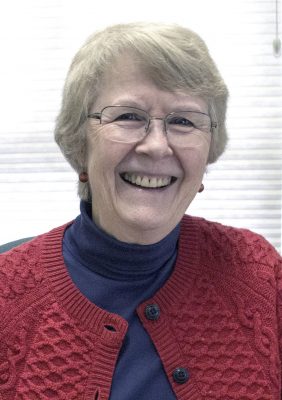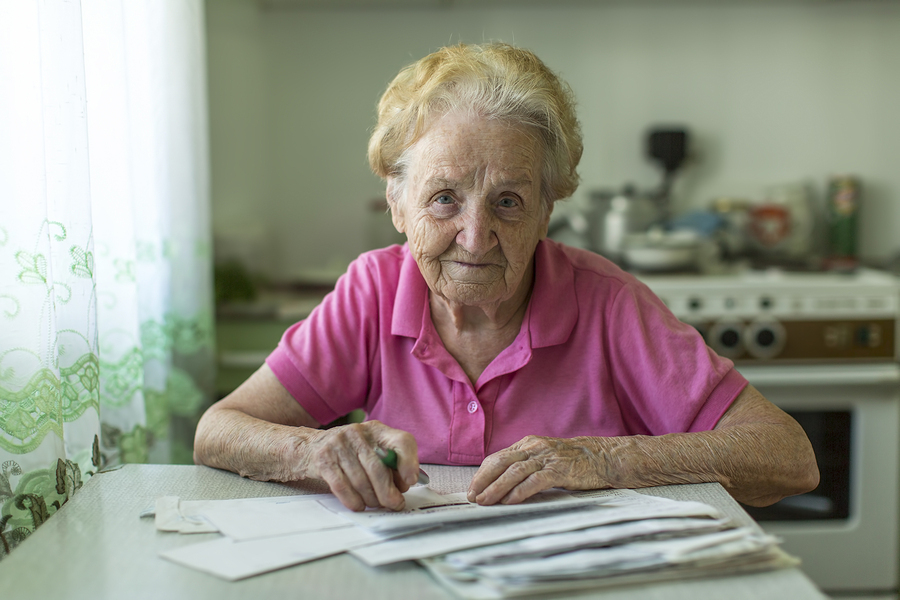Wyoming’s population is getting very old, very fast.
Of the state’s roughly 580,000 residents, nearly 100,000 are already aged 65 and older.
That percent is growing even larger. Over the past decade, Wyoming’s senior demographic grew by a whopping 47 percent, while the state’s population overall grew by just 2 percent.
As Wyoming continues to lose more of its young people than any other state in the nation, it continues to attract retirement-age folks looking for solitude and bargain-basement taxes in their Golden Years.
This rapidly aging demographic has one group of people paying close attention: public health officials wondering whether our state’s infrastructure is up to the task of caring for an increased number of old folks (spoiler alert: not really).

That’s what prompted the creation of the Wyoming Healthy Aging Coalition, brought together by retired University of Wyoming professor Virginia Vincenti.
As a first step to addressing the problem of ensuring our state can care for its aging population, the coalition worked with the Gerontology Institute of the University of Massachusetts-Boston to create the 2023 Wyoming Healthy Aging Data Report, which provides detailed information about the healthcare needs of our senior population and other related data.
The report is a new tool policymakers can use to guide their decisions on how to develop Wyoming public health system. Already, stakeholders are using it to examine how to help keep seniors out of assisted-living facilities and in their own homes with the support they need.
It also functions as an alarm of sorts: Across the board, serious health issues exist for our elderly population, most of whom live in “frontier” areas where access to care can be scant.
As this vulnerable population grows larger, so, too, will the difficulties our state faces in caring for them.
Health challenges with difficult access to care
The Wyoming Healthy Aging Report shows that many residents 65 and older have health problems.

For instance, nearly 30 percent self-reported as obese, and another 30 percent have significant tooth loss. More than 40 percent live with high blood pressure, 30 percent have high cholesterol, and more than 20 percent have some form of heart disease or diabetes.
That’s the bad news. Ensuring care for this population is hard enough in places like Cheyenne and Casper, but one in five Wyoming residents in low-population “frontier” counties are 65 or older. People in these areas have five times less access to primary care physicians, so they must travel further to see a doctor.
They also have fewer nursing homes and, because of less broadband access, cannot simply rely on telehealth.
Healthcare, of course, is also expensive, and folks are already struggling. More than 30 percent of Wyoming seniors spend more than 30 percent of their income on housing—another figure that seems likely to increase in the near future.
Preventable problems
The good news is that many of these conditions are preventable, and with adjustments to state policies that encourage healthier habits, Wyoming could see a decrease in these problems.

“We have a very high percentage of people with preventable chronic disease,” Vincenti said. “If more people made healthier lifestyle choices early in life and kept those patterns, they wouldn’t need to be in a panic later, when they’ve got high blood pressure, heart disease or diabetes and are forced to either take a zillion drugs or try to change their eating and exercise habits.”
Increasing access to affordable healthy foods like produce and including the importance of healthy eating in public education are two major ways Wyoming could improve the health of its population down the line, Vincenti said.
“There’s so much we could do to turn this around, if we changed our priorities from money and power into well-being,” she said.
But changes like this take a long time, even if they begin now. In the meantime, Wyoming has a whole lot of older people to take care of.
Senior center Tai Chi
The Healthy Aging Report is a tool that many people who work to support Wyoming seniors are excited to use.
Tom Lacock, AARP Wyoming’s associate director for advocacy and communications, is a member of the Wyoming Healthy Aging Coalition. He said after a presentation on the report to the state’s senior center directors, many were interested in using the data to improve their programming.
For instance, the report details how often and in which areas Wyoming seniors are likely to suffer from dangerous and harmful falls.
Lacock said several of the state’s senior centers have already responded to this information by adding Tai Chi classes to improve balance, as well as programming modeled on Sweden’s effort to teach individuals how to fall correctly to prevent injuries.
But more can be done, depending on a community’s needs.
Keeping seniors at home with support
Lacock said the report’s data may also help the Joint Labor, Health and Social Services Committee tackle the problem of how to keep seniors in their homes—instead of assisted living facilities—while receiving the support they need.
The “Program of All-Inclusive Care for the Elderly” (PACE) did exactly that in Laramie County for years. PACE served residents 55 and over, offering qualified seniors transportation a couple times per week to a center where they receive meals, primary care, case management, and other services.
“People absolutely loved it, but the state Health Department felt the savings wasn’t great and the administrative burden too heavy.”
But the program was a victim of budget cuts three years ago, when the Legislature slashed nearly $100 million from the Wyoming Department of Health’s budget.
“People absolutely loved it, because it allowed them to stay at home instead of assisted living or nursing home care,” Lacock said. “But the state Health Department felt the savings wasn’t great and the administrative burden too heavy.”
Despite the officials’ concerns, Wyoming seniors still need care. Nursing homes in many cities around the state find it hard to provide adequate staffing, and the cost for a private nursing home is about $100,000 a year.
Lacock and others are leaning on the information in the Healthy Aging report to encourage lawmakers to find a real solution to this mounting problem, but it remains to be seen what they will do.

